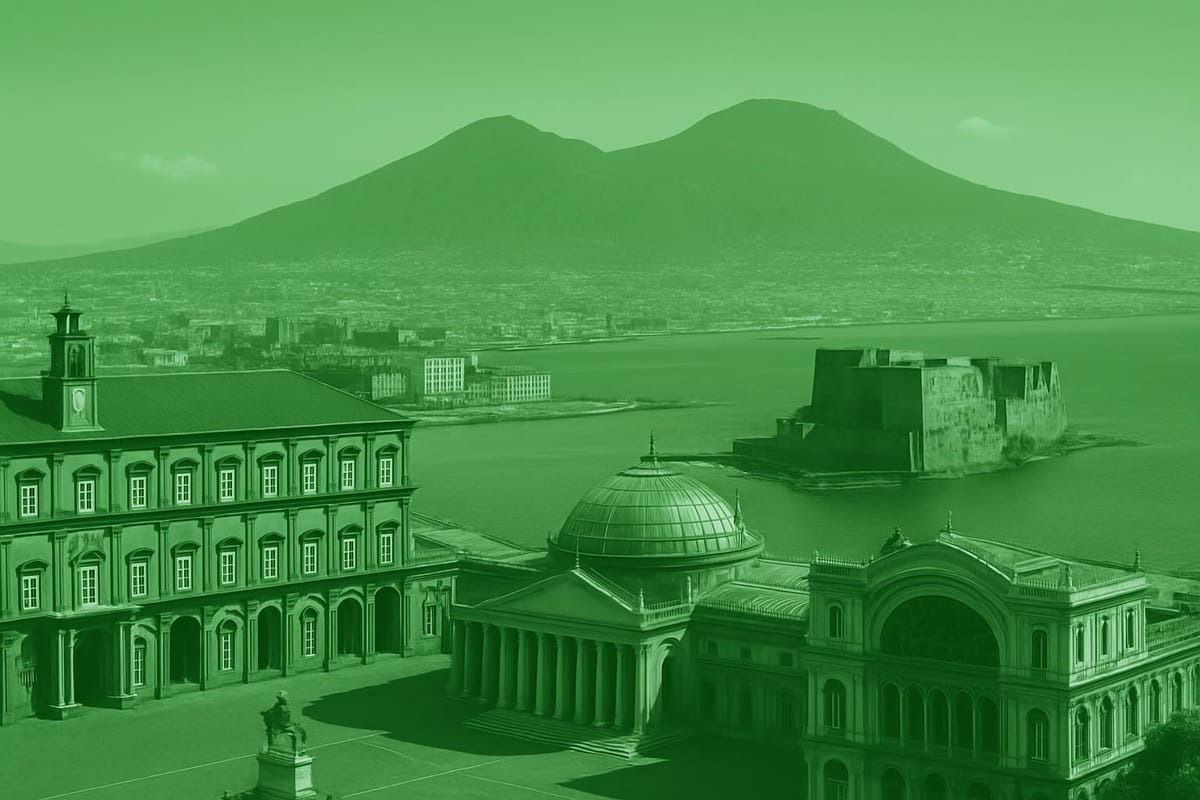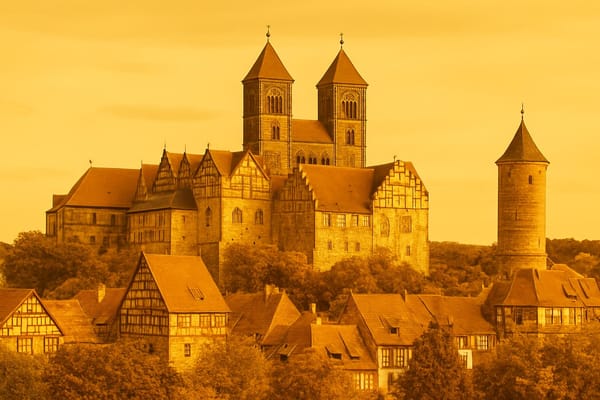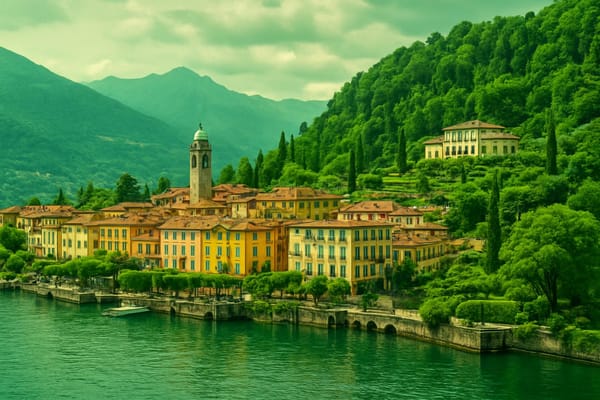Naples
Historic center, authentic pizza, coastal views, Vesuvius & Pompeii - art, sea, cuisine.

Important things to know about Naples
Naples, Italy, unfolds as a vibrant, sometimes chaotic urban tapestry where Naples and Napoli are more than names-they are living identities shaped by centuries of culture, language and everyday resilience; this southern Italian port city in southern Italy sits on the edge of the Mediterranean, where the scent of sea salt mixes with the rich aromas of Neapolitan cuisine, coffee and baking, creating an unmistakable sensory signature that defines daily life. Streets pulse with a unique rhythm: motor scooters weaving through narrow lanes, animated conversations in the Neapolitan dialect spilling from doorways, and neighbors who know each other by sight and story, producing a strong sense of local community and neighborhood character. Architecture ranges from weathered façades and dense urban blocks to elegant churches and residential palazzi, all layered with graffiti, laundry lines and the patina of time that testifies to a complex past and creative present; this complexity is mirrored in a rich cultural scene where music, theater, culinary tradition and artisan crafts coexist and evolve. Markets and cafés are hubs of social exchange, where the tradition of slow mornings and lively evenings balances the practical rhythms of commerce and family life, and where the local food culture-especially the legendary pizza-is woven into identity rather than tourist spectacle. Despite modern pressures, the city maintains a resilient, improvisational spirit, an enduring capacity for reinvention, and a magnetism that keeps attracting new residents, artists and entrepreneurs drawn to its history, energy and the enduring interplay between the urban fabric and the sea.
Sightseeing hot-spots in Naples
Naples is a city of vibrant contrasts where history and contemporary street life collide in the sunlit chaos of its streets. Walking through the historic center-a UNESCO World Heritage area-you encounter baroque churches, hidden courtyards and the famous Spaccanapoli that slices the old town like a living timeline. Art lovers will find the Museo Archeologico Nazionale indispensable for its world-class collection of Roman artifacts from nearby Pompeii and Herculaneum, while the Duomo houses the revered relics of San Gennaro, adding a powerful spiritual dimension to any sightseeing itinerary.
Along the seafront, the elegant sweep of Piazza del Plebiscito and the nearby Royal Palace provide grand civic drama, and the Lungomare promenade leads to the storied Castel dell'Ovo, perched on an islet and offering panoramic views of the bay. Strolling under the glass-domed Galleria Umberto I and down lively Via Toledo gives a taste of everyday Neapolitan life and shopping, while the legendary pizza ovens of Naples present a culinary attraction that rivals its architectural treasures. Sampling authentic Neapolitan pizza in a centuries-old pizzeria is as essential as visiting a museum.
Beyond the city limits, easy day trips make Naples an ideal base for exploring the region: history buffs can reach the ruins of Pompeii and hike Mount Vesuvius, and the glamorous islands and coastal towns like Capri and the Amalfi Coast are within a short boat or drive. Whether you’re seeking archaeological wonders, dramatic coastal scenery, or the sensory joy of local cuisine, Naples, Italy delivers unforgettable sightseeing highlights that satisfy culture, adventure and taste in equal measure.
Hotels to enjoy in Naples
Naples is a city where hotels in Naples blend vibrant street life with coastal charm, offering everything from intimate boutique stays in the historic center to grand luxury properties with sweeping sea views. Travelers searching for accommodations in Naples, Italy will find well-located options near Piazza del Plebiscito and Spaccanapoli, where the rhythm of the city, authentic cuisine and historic landmarks like Castel dell'Ovo are just steps away. For those who prefer a calmer vibe, beachfront hotels and modern havens by the Marina offer sunrise vistas and easy access to ferries for Capri and Ischia. Whether you prioritize a central spot to explore museums and pizzerias, or a serene sea view to relax after visiting Pompeii, the range of accommodation here matches many traveler preferences while keeping you connected to public transport and local charm.
Choosing the right place among the many hotels in Naples means balancing price, location and amenities: budget travelers can find charming B&Bs and guesthouses, while business and leisure guests can select spas, rooftop terraces and concierge services suited to their needs. Consider proximity to Naples International Airport for quick arrivals and departures, and check connections to the Circumvesuviana train for easy trips to Pompeii and the Amalfi Coast. Booking with a clear cancellation policy and reading recent reviews helps ensure a comfortable stay; prioritizing central neighborhoods or beachfront properties will enhance sightseeing and dining options, making your stay in Naples, Italy both convenient and unforgettable.
Restaurants to try in Naples
Naples restaurants are a vibrant tapestry of flavors where Neapolitan pizza reigns supreme and street food sits comfortably beside refined seafood eateries. In Naples, Italy, the culinary scene blends centuries-old traditions with modern creativity: wooden-fired pizzerias produce the iconic pizza Margherita with blistered crust and soft, tangy tomato, while family-run trattorie serve slow-cooked ragù and fresh pasta that echo recipes passed down through generations. Wander through the historic center and you’ll find bakeries offering flaky sfogliatella, markets overflowing with local produce, and waterfront ristoranti where the day’s catch becomes the centerpiece of a memorable meal. For travelers searching for the best restaurants in Naples, choices range from bustling, no-reservations pizzerias to intimate, Michelin-starred spots - all promising warm hospitality and bold, authentic flavors that define Neapolitan cuisine.
Choosing where to eat in Naples means balancing the pursuit of legendary pizza with the discovery of lesser-known gems that highlight seafood, seasonal vegetables, and artisan cheeses. The city’s neighborhoods each offer a distinct dining personality: the old alleys brim with rustic osterie, while the promenade and harbor host upscale menus focused on fresh fish and panoramic views. Food lovers and SEO-driven travelers alike will appreciate the diversity of Naples restaurants, where open-air dining, friendly service, and a devotion to local ingredients create lasting memories. Whether you’re craving a quick slice served standing at a counter or a leisurely multi-course dinner paired with Campanian wine, Naples delivers a culinary experience rooted in tradition and celebrated worldwide.
Best shopping stops in Naples
Naples is a vibrant destination for shopping enthusiasts, where historic streets and modern boutiques blend seamlessly. Strolling down Via Toledo and Via Chiaia reveals a mix of high-street brands, independent designer shops and elegant showrooms framed by classic Neapolitan architecture. The majestic Galleria Umberto offers a photogenic setting for luxury window-shopping, while the narrow lanes of Spaccanapoli and the Spanish Quarter are filled with artisan ateliers, handmade leather goods and unique souvenirs that capture the city's character. Food lovers will find the city's markets irresistible, with stalls selling fresh coffee, regional cheeses, aromatic herbs, limoncello and the irresistible sfogliatella, perfect for sampling local flavors while hunting for culinary gifts.
For bargain hunters and treasure seekers, Naples delivers with lively markets such as Mercato di Poggioreale and the antique shops scattered around historic neighborhoods, where vintage finds and decorative ceramics often surface among traditional crafts. Visitors interested in religious art and nativity scenes should not miss Via San Gregorio Armeno, home to master craftsmen who have been shaping miniatures and presepi for generations. Whether you're after high-end fashion, bespoke tailoring, artisan jewelry or authentic street food, the shopping in Naples scene offers a rich blend of tradition and trend that rewards exploration and makes every purchase a memorable keepsake of Napoli.
Nightlife highlights in Naples
Naples is famous for its vibrant Naples nightlife, where the energy of Napoli pours out from historic alleyways into chic squares and seafront promenades. As evening falls, the historic center comes alive with cafes and bars around Piazza Bellini, offering everything from relaxed aperitivo hours to spirited conversations over cocktails. Strolling along the Lungomare at sunset reveals rooftop bars and romantic terraces that frame views of Vesuvius, while the elegant streets of Chiaia showcase fashionable lounges and craft cocktail spots. For those seeking a more local scene, narrow lanes hide tiny taverns and late-night pizzerias where a slice of authentic pizza fuels the night until dawn, delivering the unmistakable taste of Naples.
The diversity of entertainment makes nightlife in Naples appealing to all tastes: pulse-raising clubs in Vomero, intimate venues with live music, and jazz bars where musicians improvise into the small hours. Street performers, open-air concerts, and seasonal festivals further enrich the calendar, attracting both tourists and Neapolitans eager to celebrate. Whether you prefer dancing, discovering artisanal cocktails, or savoring traditional cuisine under warm lights, the clubs in Napoli, rooftop terraces, and cozy wine bars guarantee unforgettable nights. Explore with curiosity, respect local rhythms, and you’ll find that the spirit of Naples truly awakens after dark.
Getting around in Naples
Naples offers a compact but efficient airport and train situation that makes arrival and onward travel straightforward for visitors: Naples International Airport (Capodichino) sits just north of the city and is linked to the center by frequent Alibus shuttles, city buses, taxis and rideshares, making the trip from Naples airport to city center typically 15–30 minutes depending on traffic; for rail travelers the real hub is Napoli Centrale at Piazza Garibaldi, a short Alibus or taxi ride away, where frequent high-speed trains like Frecciarossa and Italo connect Naples to Rome, Milan and other major Italian cities while regional services and Intercity trains provide reliable links to Salerno, Caserta and the Amalfi area; for day trips the suburban Circumvesuviana network departs from nearby Napoli Porta Nolana to Pompeii and Sorrento with very frequent services, though tickets should be purchased in advance or validated at the machines to avoid fines, and platform information at Napoli Centrale can be busy during peak times so arrive early for luggage and connections; overall the combination of airport shuttles, local buses, taxis and diverse train options gives travelers to Naples, Italy good flexibility, strong national and regional rail links and straightforward access to the city’s historic center and surrounding attractions.
Culture must-see's in Naples
Naples is a city where history and daily life fuse into an unforgettable cultural tapestry, and its historic center - a UNESCO World Heritage area - is the beating heart of that experience. Walking through Spaccanapoli and the narrow lanes of the Quartieri Spagnoli, visitors encounter centuries-old churches, Baroque palaces, and vibrant street art that speak to a continuous, living tradition. The city’s proximity to Pompeii and Vesuvius gives Naples a unique archaeological depth, reflected in the treasures housed at the Museo Archeologico Nazionale, while the aroma of wood-fired pizza-the original Neapolitan pizza-anchors the culture in flavors as much as in monuments. Street vendors, lively markets, and the ritual of an espresso on a sidewalk terrace show how everyday customs have become cultural highlights that attract travelers seeking authentic Neapolitan life and culinary heritage.
Beyond food and ruins, Naples is a powerhouse of performing arts, religious pageantry, and artisanal craft that enrich the city’s cultural identity. The marble grandeur of the Teatro di San Carlo, one of the oldest active opera houses in Europe, sits alongside intimate venues where traditional tarantella and modern music collide. Artistic marvels such as the Cappella Sansevero and its mysterious “Veiled Christ” blend craftsmanship with mystique, while the tradition of intricate nativity scenes-handmade presepi-keeps centuries-old artisan skills alive. Festivals, processions, and the resilient Neapolitan dialect add narrative and color to the urban landscape, and the sweeping views across the Bay of Naples remind visitors that this rich cultural mosaic is as much about place and panorama as it is about people and practice.
History of Naples
Naples, Italy, has a layered and dramatic history of Naples that begins long before it became the bustling modern city known as Napoli. Founded by Greek settlers as Neapolis in the 8th century BCE, the city’s coastal position on the Gulf of Naples made it a crossroads of Mediterranean trade and culture. Under Greek influence it developed a rich urban life of theater, art and commerce; later, as the Roman Republic and Empire expanded, Naples became prized for its villas and intellectual life, with Roman elites flocking to enjoy the mild climate and dramatic views of Mount Vesuvius. The catastrophic eruption of Vesuvius in 79 CE preserved neighboring towns such as Pompeii and Herculaneum, creating an archaeological legacy that continues to shape global understanding of ancient life and draws scholars and tourists to the National Archaeological Museum in Naples, which houses many of the most important finds. Through late antiquity and the medieval centuries Naples passed among Byzantines, Lombards, Normans and the powerful Angevin and Aragonese dynasties, each leaving visible imprints in architecture, language and law and contributing to a resilient urban culture that kept Neapolitan traditions alive.
As the centuries unfolded, the history of Naples shifted from medieval power struggles to early modern prominence as the capital of the Kingdom of Naples and later the Bourbon-led Kingdom of the Two Sicilies, fostering artistic patronage, baroque churches and royal palaces. Spanish viceroys and Bourbon monarchs both influenced cuisine, music and civic life; indeed the world-famous pizza and the tradition of the Neapolitan song emerged in this melting pot. The 19th-century unification of Italy transformed Naples politically and economically, but its rich cultural identity remained intact, surviving wars, rapid urbanization and waves of emigration. Today Naples combines UNESCO-protected historic centers, sprawling markets and vibrant street life, with museums, churches and archaeological sites that testify to millennia of human creativity. For visitors and researchers interested in the Naples history, the city offers an unparalleled continuity from ancient Greek and Roman roots through medieval kingdoms to modern Italy, making it a focal point for anyone exploring the deep and diverse heritage of southern Italy.



